Bionic limbs have come a long way. They’re no longer just mechanical tools — they’re smart, responsive, and designed to work with your body. But there’s something even more powerful happening behind the scenes. It’s not just about what the bionic limb can do. It’s about how your brain learns to use it.
That’s where adaptive control systems and neuroplasticity come together.
At Robobionics, we’ve seen time and again how a person’s brain changes when they begin using a bionic limb like Grippy™. It’s not a one-way process. It’s a conversation between the brain and the device — a back-and-forth exchange that improves with time.
This is the story of how adaptive control systems make bionic limbs smarter, and how your brain, through neuroplasticity, rises to meet them. It’s not just about moving a hand. It’s about growing with it.
Understanding Adaptive Control Systems
The Basics Made Simple
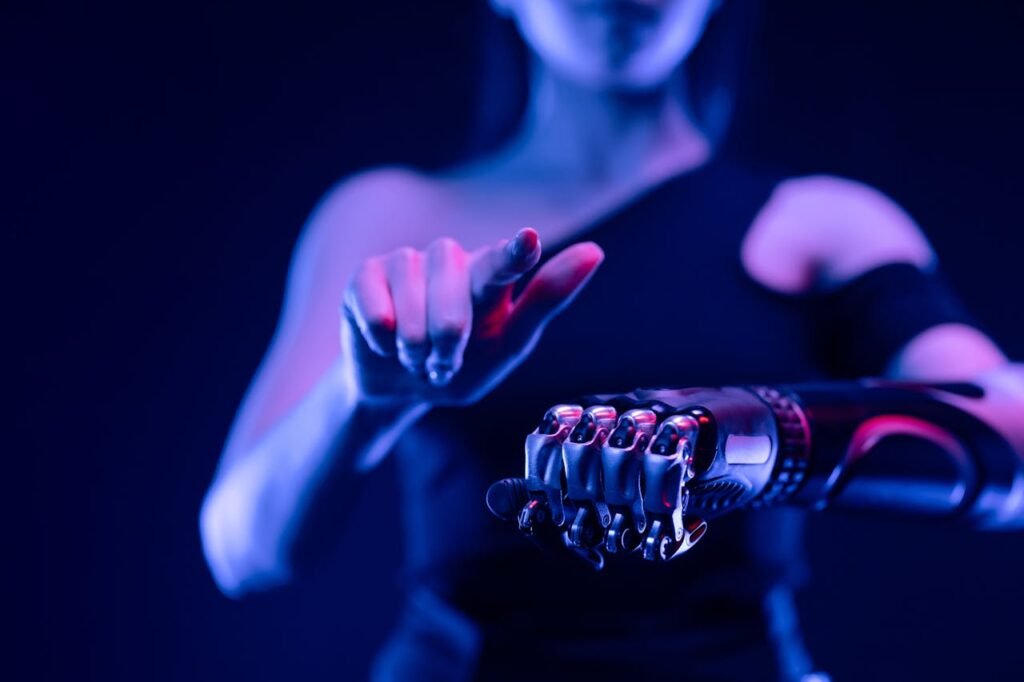
Every time you move your hand or take a step, your brain sends signals through your nerves to your muscles. These signals adjust in real time. If something is heavy, your brain tells your muscles to push harder. If it slips, your fingers tighten.
Adaptive control systems try to mimic this natural, ongoing adjustment in a bionic limb.
Instead of using fixed commands — like “open hand” or “close hand” — adaptive systems respond to how you move, how fast, how strong, and what happens after. They adjust based on feedback. And they keep improving as they gather more data.
This is different from older, mechanical systems. With adaptive control, the hand doesn’t just obey. It learns.
This learning is powered by algorithms — but the real magic happens when those algorithms match your brain’s learning patterns. That’s when movement feels smooth, natural, and real.
The Brain Is Always Watching
Neuroplasticity at Work
Your brain doesn’t just send commands. It listens. It watches the results of every movement. It constantly adjusts.
This is neuroplasticity. It means your brain can change its wiring. If a new hand shows up — even if it’s made of metal and wires — your brain doesn’t reject it. Instead, it tries to understand it, control it, and include it in your body map.
The first few times you use a bionic limb, the brain is unsure. The signals may be weak or slow. But with each try, the brain tests a new path. It remembers what works. And with enough repetition, those paths become strong.
The adaptive system in the bionic limb does something similar. It tracks how you use the hand. It adjusts grip strength, speed, or pressure based on what’s working. It changes with you.
This shared learning — from brain and device — is what makes advanced bionics so exciting.
Feedback Loops and Learning
How Information Shapes Control
Think of a loop: you send a signal, get a response, then adjust your next signal. That’s how learning happens. That’s also how adaptive control works.
When Grippy™ senses how much force you’re using, it can reduce pressure if it’s too much, or increase it if needed. Your brain, in turn, feels that change — through pressure or vibration feedback — and learns how to move better next time.
This loop continues until movement becomes natural.
It’s like learning to ride a bike. At first, you wobble. Then you get balance. Then you ride without thinking. That same shift happens with a smart bionic limb. You and the hand begin to understand each other.
This is not instant. It takes time. But with consistent use, your brain and the adaptive control system start working like a team.
Why Fixed Control Isn’t Enough
Everyone Moves Differently
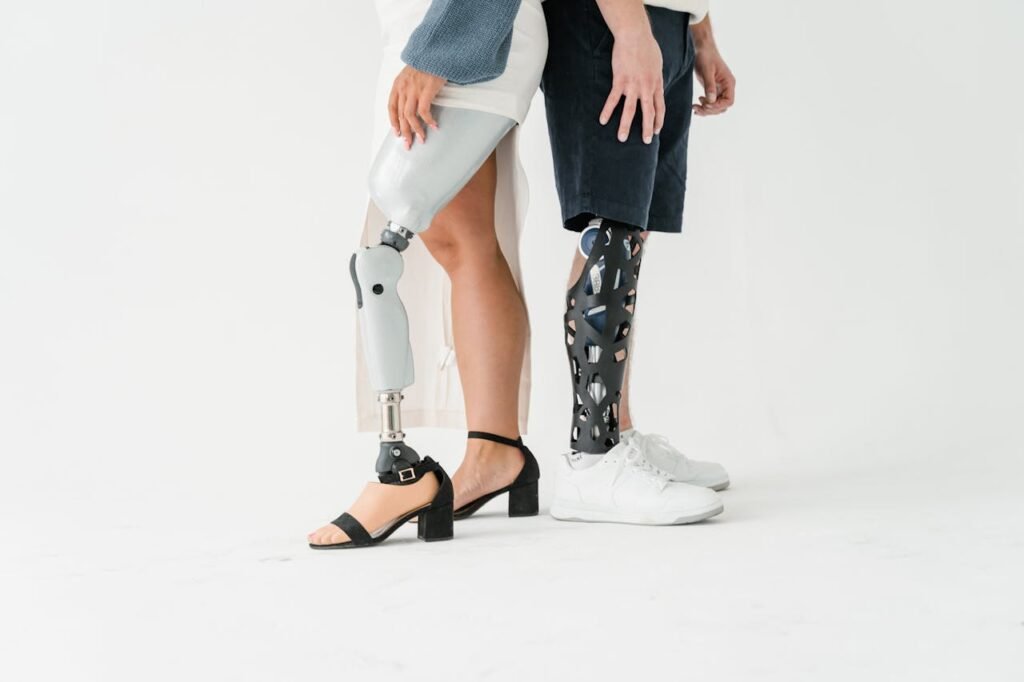
No two people use their hands the same way. Some grip softly, others firmly. Some move quickly, others more slowly. That’s why a one-size-fits-all system doesn’t work well.
In older prosthetics, users often had to adjust themselves to fit the hand. They had to move in very specific ways to trigger the right response. It felt unnatural and frustrating.
But with adaptive control, the hand learns you. It studies your signals, your habits, your rhythm. Then it adjusts itself to match.
This means less effort for you, and more accurate movement. You’re not learning a machine. You’re training a partner.
And as your brain adapts, the hand adapts too. The result is movement that feels smoother and more real.
Muscle Signals and Machine Learning
A Simple Conversation
Your brain uses tiny electric signals to control muscles. Even after amputation, those signals are still there in the remaining part of the limb.
Grippy™ reads those signals through sensors placed on your skin. It then uses smart software — sometimes powered by machine learning — to figure out what you’re trying to do.
At the same time, your brain is watching what happens. If the movement is wrong, it tries a different signal. If it works, the brain remembers that path.
Over time, the machine gets better at guessing what you want. And you get better at sending clear signals.
This is what makes the connection so strong. It’s not just about having a good bionic hand. It’s about having a bionic hand that learns with you.
Building a Shared Language Between Brain and Bionics
The Brain Sends, The Hand Learns
In everyday life, we do so many things without thinking. Lifting a glass. Turning a doorknob. Typing on a phone. We don’t pause to plan each movement. That’s because the brain and body speak the same language.
When a person begins using a bionic hand like Grippy™, that shared language doesn’t exist yet. The brain still sends signals. But the hand doesn’t always respond the way the brain expects.
At this point, adaptive control systems come into play. They help build a new shared language. The hand starts to recognize certain patterns — when a signal from your forearm muscle means “grip lightly,” or when a stronger signal means “grip tightly.” Over time, the system stores this understanding and uses it to fine-tune the hand’s behavior.
Meanwhile, your brain is watching carefully. Every movement — whether successful or not — teaches your brain something. If the hand responds correctly, your brain locks in that pattern. If it doesn’t, your brain tries again. Both the brain and the bionic hand are learning, adjusting, and evolving together.
This process doesn’t happen overnight. But with regular use, repetition, and feedback, a bond forms. The hand starts to feel more like a natural part of you — not because it looks real, but because it acts real.
Sensory Feedback Rewires the Brain
Feeling Again Changes Everything
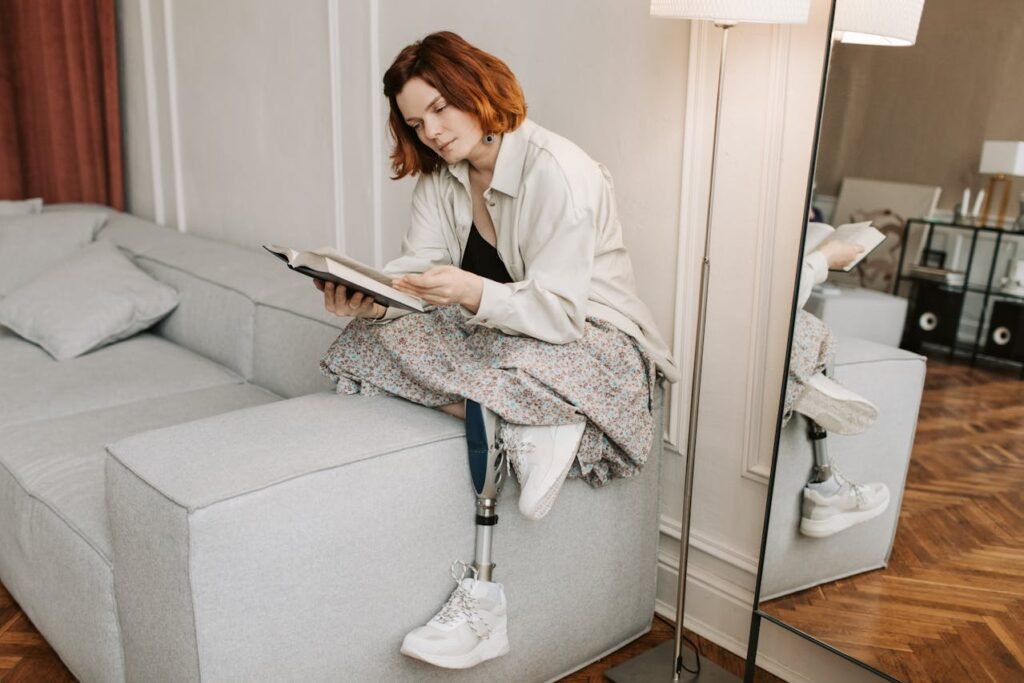
One of the most powerful ways adaptive control systems support neuroplasticity is through feedback. Not just any feedback — the kind that helps your brain feel.
In natural limbs, when you pick something up, your fingers tell your brain how hard you’re pressing. You don’t crush a paper cup or drop a pen because you’re constantly getting touch feedback.
Early prosthetics didn’t offer this. You could try to grip, but you didn’t know if you were holding the object correctly. This made users anxious and limited what they could do.
That’s why Robobionics created Sense of Touch™ — a tactile feedback system in Grippy™ that gives users real-time pressure information. When you grip something, the sensors in the hand send vibration or pressure sensations back to your arm.
Your brain starts connecting these sensations with the action. A stronger vibration might mean a tighter grip. A lighter buzz might mean the hand is barely holding the object. The brain takes this in, processes it, and makes adjustments.
Over time, these sensations become part of your body’s awareness. You don’t just see that you’re holding something. You feel it — even without a biological hand.
This changes how your brain maps your body. The space once filled by a missing hand is now activated by a new one. And the brain, incredibly, adapts. It includes the bionic hand in its mental map.
This is a massive shift. It’s not just about function. It’s about identity — reclaiming a part of yourself through new sensations.
Real-Time Learning Keeps Control Natural
Adapting On The Go
One of the greatest benefits of adaptive control systems is their ability to change in real time. Let’s say you usually grip your toothbrush with a certain amount of force. But today, your hand is a little tired. Your muscles send a weaker signal.
A rigid system would think you meant to hold the toothbrush loosely — and you might drop it. But an adaptive system does something better. It notices the small change and adjusts. It compensates by gently increasing grip strength to match your usual pattern.
This helps keep movement natural, even when your body isn’t consistent. Maybe you’ve just exercised. Maybe you’re recovering from surgery. Maybe you’re stressed. Your signals may vary — but your control doesn’t have to suffer.
This moment-to-moment flexibility supports how the brain naturally works. The brain doesn’t rely on fixed instructions. It responds to the situation. Adaptive control systems do the same, allowing the bionic limb to move like a real extension of your will.
Error Correction Builds Better Control
Learning From Mistakes
Every time the brain makes a movement error, it learns something. This is part of a deep learning system in our nervous system called “error-based learning.” If you drop a glass, you adjust your grip next time. If you reach too far, you shorten your next stretch.
Adaptive control systems mirror this kind of learning.
When you use a bionic hand and it does something slightly wrong — maybe it closes too quickly or not tight enough — the system remembers that outcome. The next time, it tries to improve.
Your brain notices too. It adjusts its signal. Maybe you send a stronger impulse, or try a slightly different muscle pattern. Together, your brain and the system tune their responses. They get closer to what feels “right.”
Over weeks and months, this process creates a sense of mastery. The hand feels smarter. You feel more in control. And behind the scenes, your brain is building strong, reliable circuits that support smooth movement.
This isn’t magic. It’s deep, biological learning — supported by smart technology.
The Emotional Side of Adaptive Control
Confidence Changes Everything
For many people, limb loss is more than physical. It changes how they see themselves. It changes how they move through the world. Regaining function is just one part of recovery. Regaining confidence — that’s the bigger part.
Adaptive systems play a quiet but powerful role in rebuilding that confidence. When a hand responds well to your thoughts, you start trusting it. When you can perform small daily tasks — like holding a spoon, opening a door, or signing your name — you start trusting yourself.
This trust encourages you to try more. To do more. To live more fully.
And as your confidence grows, your brain opens up even more. Learning becomes easier. Movement becomes smoother. Control becomes natural.
The emotional side of bionics is often overlooked — but it matters deeply. Because every small win, every tiny success, feeds your brain’s motivation to keep going.
Training the Brain with Technology
Daily Practice Builds New Pathways
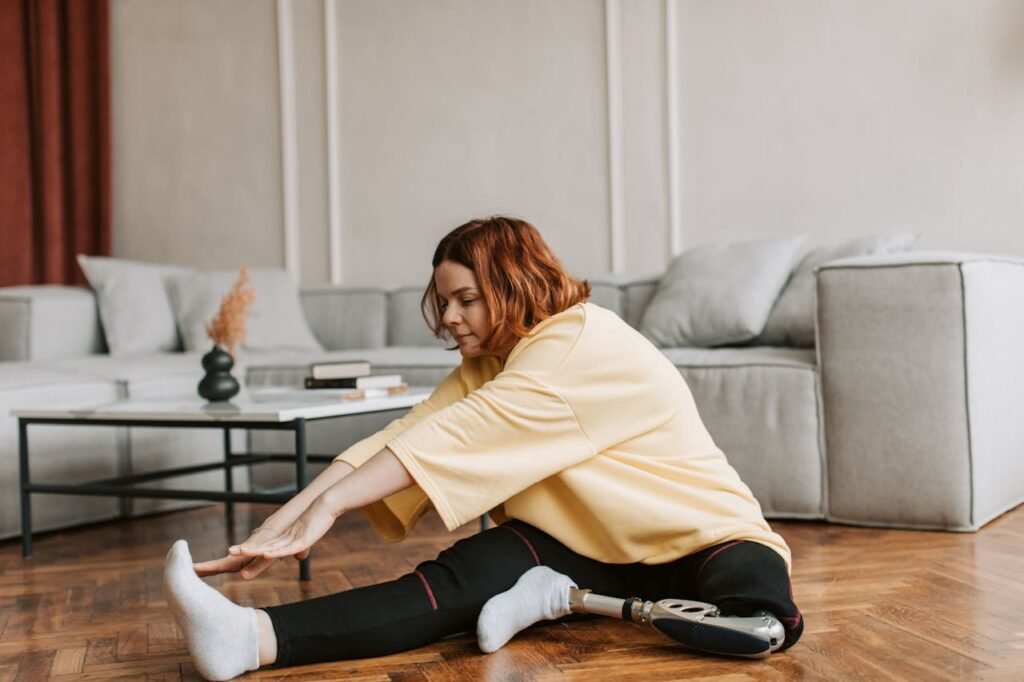
Your brain is like a muscle. It gets stronger with use. And when it comes to learning to control a bionic limb, the more you practice, the faster your brain builds the pathways it needs.
Adaptive control systems make this process smoother because they reward practice with real, visible progress.
In the beginning, it might take real effort to open or close the hand. But then one day, you reach out and pick up a spoon without thinking. That’s a breakthrough moment. It’s when your brain’s learning and the bionic system’s adaptation finally meet.
We see this often at Robobionics. A user who once had to focus intensely on gripping a pen suddenly starts writing their name naturally. This isn’t just mechanical. It’s neurological. It means the brain has formed a stable, automatic path for that movement — and the adaptive control system has matched it perfectly.
That’s why daily practice, even for just 10–15 minutes, is powerful. It doesn’t have to be intense or technical. Just regular use is enough to help both your brain and your bionic hand become partners.
Gamified Learning Enhances Neuroplasticity
Making Training Fun Encourages Repetition
At Robobionics, we understand that motivation is key to success. That’s why we created the Gamified Rehab App — a simple, fun tool that turns training into play.
The brain responds strongly to reward. When you finish a level, score a point, or see your progress improve on a graph, your brain gets a little shot of dopamine. That’s the brain’s “feel-good” chemical. It tells you, “This is working. Let’s do more.”
Games also encourage you to explore different types of movements. You might reach, pinch, tap, or hold objects for a certain time. All these variations help your brain build more flexible control — not just one way to move, but many.
The adaptive control system tracks these movements too. It fine-tunes its settings based on how you respond. So every time you play, both your brain and the device are growing smarter.
Over time, users who play these games report faster adaptation and greater control in daily life. Not because they worked harder — but because they played more.
Real-World Adaptation: From Lab to Life
How Adaptive Control Helps Outside the Clinic
Many prosthetic systems work well in a lab or test room. But real life is messy. You lift things of different weights. You walk in crowds. You cook. You commute. Nothing is ever the same twice.
That’s where adaptive control truly shines. It doesn’t need ideal conditions. It adjusts to your reality — not the other way around.
Let’s say you’re helping your child tie their school shoes. Your movements are soft, careful, and slow. Then a few minutes later, you’re grabbing a heavy water bottle from the fridge. The grip, timing, and force needed are totally different.
With older prosthetics, you might have to manually switch modes or settings to handle this shift. With adaptive control, it just happens. The system senses your intention and adapts.
Your brain senses this too. It starts trusting the hand more. You stop overthinking. You just move.
This is the goal — not just movement, but movement that fits into your life, naturally and confidently.
Helping the Brain See the Bionic Limb as Its Own
Body Maps and the Feeling of Ownership
Deep inside your brain is a region called the somatosensory cortex. It contains a map of your whole body. This map is flexible. It updates when your body changes — including when a limb is lost.
When you start using a bionic limb, your brain initially sees it as “external.” But with consistent use and feedback, the map begins to change. The area once responsible for your real hand starts responding to the bionic one.
This is called embodiment — the feeling that something artificial is actually a part of your body.
Embodiment is not just about appearance. It’s about function. When the bionic hand responds to your intention, and when it gives back useful feedback, your brain accepts it as “mine.”
Adaptive control supports this by making every movement smoother and more precise. When the hand moves in a way that matches your thoughts, the illusion becomes reality.
The better the match, the stronger the sense of ownership. And the stronger the ownership, the deeper the brain’s rewiring.
The Brain Keeps Adapting Over Time
Neuroplasticity Is Not a One-Time Event
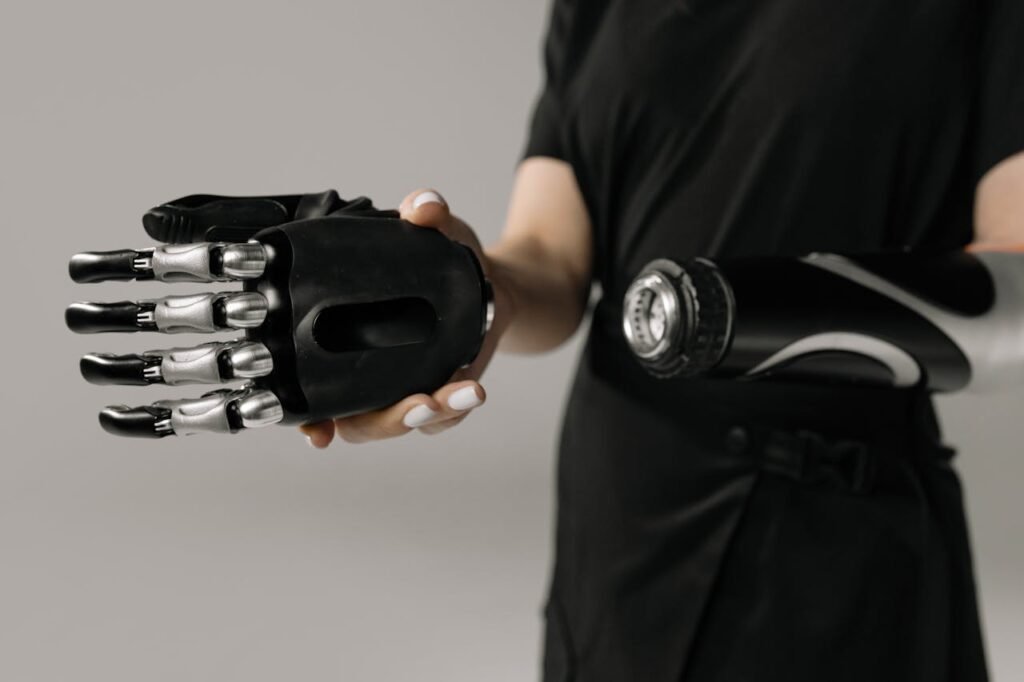
Many people think neuroplasticity only happens at the start of using a bionic limb. But that’s not true. The brain keeps adapting long after the first few months.
You may learn basic control in the first six weeks. But new skills — like using two hands to cook, or tying a knot — may develop months later. Each new challenge opens up a new part of your brain’s learning system.
The adaptive system in the hand is also still learning. It continues to track how you move, what works best, and how to make things smoother.
This is a long-term relationship. It grows over time. And just like any relationship, it needs care, attention, and patience.
That’s why our support at Robobionics doesn’t end after fitting. We stay in touch, offer training updates, and fine-tune your device based on your growth. Because we know your brain isn’t done — it’s just getting started.
The Human Brain and the Future of Bionics
Not Just Smarter Hands, But Smarter Healing
As technology grows more advanced, bionic limbs are becoming more than just tools. They’re becoming part of how we heal, grow, and redefine what’s possible.
But even the smartest hand in the world means little without the brain to drive it. At Robobionics, we’ve always believed that the brain is the true power behind every movement — and the more we understand it, the better our technology becomes.
That’s why we design our adaptive control systems to support not just function, but neuroplasticity. We’re not just helping users move again. We’re helping them reconnect with a part of themselves they thought was lost.
That’s powerful. That’s human. And that’s the future of bionics.
Giving Power Back to the User
Control That Fits You
Everything we build — from Grippy™ to our rehabilitation tools — starts with a question: What does the user need to feel strong again?
Adaptive control is part of that answer. It respects that no two users are the same. Some move fast. Some move slowly. Some need gentle grips. Some want firm strength.
Instead of forcing people to adapt to the hand, we build the hand to adapt to the person.
And because your brain is constantly learning and growing, we make sure your bionic hand keeps up. It’s not fixed. It evolves. Just like you do.
Encouraging Belief Through Movement
Small Wins That Change Lives
Many of our users come to us unsure. Will this work for me? Will I be able to do basic tasks again? Will I feel whole?
The answer is yes — but not all at once. First comes a small movement. A tiny moment of control. Maybe the hand closes when you ask it to. Maybe you hold a fork for the first time in years.
Then something amazing happens. You smile. You believe.
From there, the brain responds with even more learning. And the hand responds with even more control. This is how progress builds — not just from training, but from hope.
Hope fuels repetition. Repetition builds neuroplasticity. Neuroplasticity powers long-term success.
This is why we do what we do.
A More Affordable, Accessible Future
Innovation Without Barriers
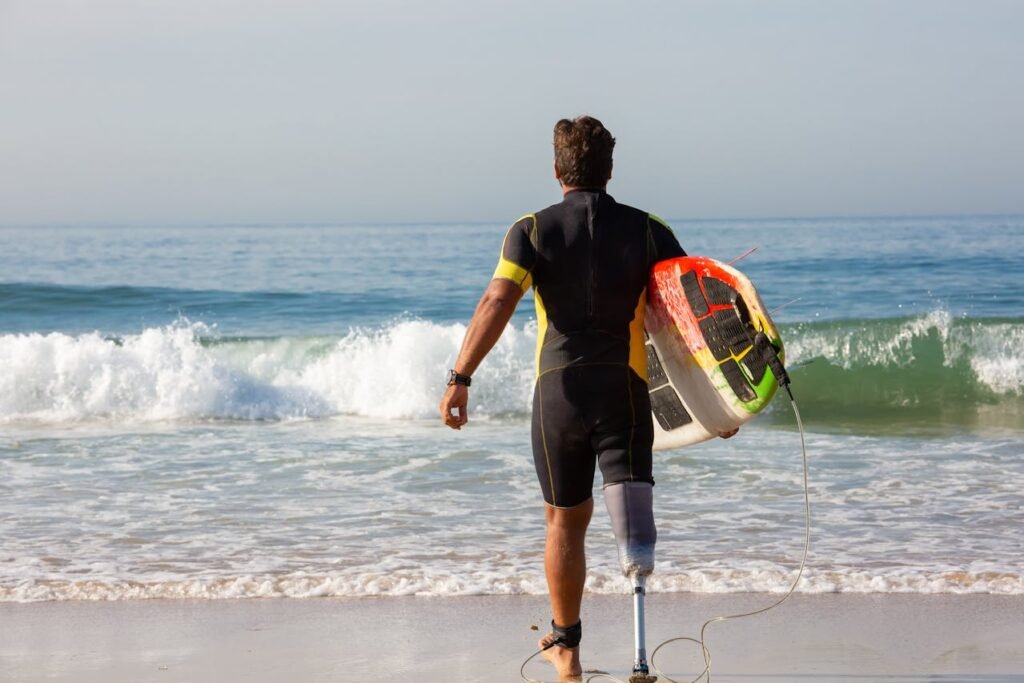
At Robobionics, we’re proud to say that our devices are made in India — not just in labs, but in response to real people, real needs, and real lives.
We’ve kept our products affordable, with prices far lower than most imported bionic limbs. We’ve partnered with prosthetic centers across the country to make sure no one is left behind. And we’ve trained local teams to support every fitting, every adjustment, every step.
Because your brain’s ability to adapt doesn’t depend on how much money you have. It depends on access, encouragement, and belief.
That’s why we build for inclusion. So that more people — from every background — can experience the power of adaptive bionics.
Final Thoughts
Where We Go From Here
The journey of regaining control after limb loss is deeply personal. It’s filled with hard work, courage, and discovery. But it’s also filled with science — with the quiet, powerful force of neuroplasticity helping you rebuild from the inside out.
Adaptive control systems are not just a feature of our technology. They’re a philosophy. A belief that movement can be personal. That learning never stops. And that healing is possible — at any age, for any person, in any place.
We’re honored to be part of this journey with every user. And we’re just getting started.
Take the First Step
Ready to experience how your brain and a bionic limb can grow together?
Schedule a free demo with us at https://www.robobionics.in/bookdemo/ and take the first step toward real control, real movement, and real confidence.
You don’t need to be perfect to begin. You just need to begin.
We’ll walk with you every step of the way.



